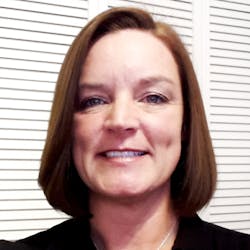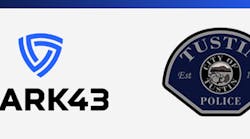For years, public safety agencies have found themselves under pressure to reduce costs while still protecting the citizens they are sworn to serve. As a result, some agencies have had to reduce staff. Others have been unable to invest in upgrades to old equipment, meaning that officers are reliant on old handsets and outdated computers to do their jobs. This is a legitimate problem that is not going away, and no doubt adds to pressure that these organizations already face. Instead of accepting that the budget situation necessarily means hard cuts, agencies should think outside the box.
Thankfully, some law enforcement offices across the country are discovering a solution to this problem: multi-agency consortiums. Consortiums allow agencies to combine resources and become more than the sum of their parts. Multi-agency consortiums also allow for increased operational efficiency and reduced costs while lessening the harshness created by cuts in personnel or capital expenditure.
“By leveraging the regional infrastructure and modules provided by Broward County, the Sunrise (Fla.)Police Department has seen its capital and operating costs [become] approximately 75 percent less than what it would have been had we acquired the software and systems on an individual and non-regional basis,” says Capt. Anthony Rosa, uniform division commander for the Sunrise Police Department. The Broward County Board of County Commissioner’s Regional LE RMS Program protects and serves more than 50 percent of the population of the county with more than five thousand users.
Consortiums make the most sense when they leverage collective resources to share information and technology. One way they can do this is through a shared record management system (RMS), which allows multiple agencies to have access to the same records on an individual.
A shared RMS allows these agencies to create a more complete involvement history on an individual.
Building a consortium with a hosted infrastructure helps reduce costs, streamline the management process, and share data seamlessly between the agencies participating in the program. At the same time, implementing a RMS system that spans multiple organizations with varying standards can be complicated. It’s worth considering a few best practices related to management and operation of the program.
Governing a consortium
From the outset, building a successful consortium requires a transparent and rigid operational structure to guide the sharing of records. If many agencies are leveraging the same records system, there needs to be a clearly defined organizational structure to govern the rules pertaining to its use. The shared RMS raises questions like who would manage the global aspects of the program and how decisions on global matters would be made.
Satisfying the needs of each individual agency may require a democratic approach—the creation of a governing body for the consortiums by which each agency selects a representative with decision-making authority. In this model, the consortium operates as a consensus, with each member agency having a single vote, no matter the size or jurisdiction. No changes would be made to RMS policy, nor would updates be made to the system without a majority vote.
In this scenario it is crucial to start with a common understanding of what an oversight board might include in its responsibilities. Aside from providing clear hierarchy and ownership, the board allows for collaboration. Meetings of board members encourage and facilitate learning and discussion, and members can share best practices or lessons learned with one another. This allows for a harmonization of processes, with each agency tapping into the others’ strengths.
Both a democratic and a more hierarchical approach each have their benefits; however, a focus on consensus helps encourage ownership from each of the agencies involved, regardless of size.
Standard operating procedures
A best practice that can evolve from the establishment of a governing board is the development of a series of standard operating procedures regarding RMS use. As a result of the governance board and the clearly defined ownership of the platform, agencies may realize some harmonization of records management for shared benefit. To ensure the RMS is being utilized to its full potential, leveraging the individual data of the various agencies, and completing the most thorough profile for each individual, a governing board might establish guidelines for data entry, candidate identification, version updates and customizations to the system at the agency level. Here, success requires a balance between making the system work best for the individual conditions of each agency while still making the processes standardized enough for the consortium. For example, two records could not be merged between agencies without first having matching names, addresses, social security numbers and similar pictures. Consortiums may even consider writing an instruction manual to codify these best practices across the agencies.
The size and scope of many consortiums requires participants to embrace collaboration, coordination, and dedication in order to achieve an effective outcome for the members. At the same time, a democratic approach may not always be appropriate. In some consortiums, one member that has exaggerated influence over the others or that covers a vastly greater jurisdiction might have a greater deciding role than other agencies. Other consortiums may find that the decision-making process ought to be more thorough than a simple vote.
What’s most important is that the agencies agree to a structure and specific processes, and stick with them. When used effectively, the value of RMS scales as the information is shared with more people and organizations. Shared records let public safety agencies more quickly identify an individual and build an accurate profile of them. Having an RMS system can reduce the need for expenditures on other, complementary technologies and increase efficiency. Ultimately, this model of sharing information and systems across agencies should be an example about how consortiums allow for saved time and money through collaboration and pooled resources.



